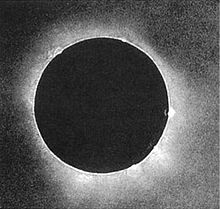1. What is a daguerreotype?
What did the surface of a daguerreotype resemble? When were they prominent?
What photographic process did the daguerreotype replace?
According to the dictionary,
a daguerreotype is an obsolete photographic process, invented in 1839, in
which a picture made on a silver surface sensitized with
iodine was developed by exposure
to mercury vapor. The surface of a daguerreotype resembles that of a
mirror because images are formed on a reflective silver plate and has to be set
at an angle when finishing as if “reflecting” a dark image. Daguerreotypes were
prominent from 1840-1855. Daguerreotypes replaced the photographic process of camera obscura.


2. What is an "albumen" print? What was the main
"ingredient" of the albumen process? When did the albumen process die
out?
An albumen print was the first profitable and notable method of developing a photographic print on a negative made of paper. The main “ingredient” of the albumen process was albumen found in egg whites to better fuse photographic chemicals together to the paper. The albumen process died out around the 1920’s.
An albumen print was the first profitable and notable method of developing a photographic print on a negative made of paper. The main “ingredient” of the albumen process was albumen found in egg whites to better fuse photographic chemicals together to the paper. The albumen process died out around the 1920’s.


3. What is a "stereograph?" When were they
popular?
A stereograph is a technique used to show depth in pictures by putting
two 2-D images together to make a 3-D image when viewed by a stereoscope.


4. What is a "carte de visite?" What were they
used for?
A carte de visite was a small
albumen print, sometimes with writing and were usually used as photograph cards
in the 1800’s.


5. Who were Matthew Brady and Alexander Gardner? They both
are notable for what type of photography? When were they active? Post two
noteworthy photographs for each photographer.
Mathew Brady was a famous American photographer in the 1800’s made famous by his photos of celebrities and recordings of the American Civil War. Alexander Gardner was a Scottish photographer in the United States in the 1800’s who also became famous from his photography of the American Civil War, along with photos of President Lincoln. They were active photographers in the 1860’s and continued some after the Civil War.

Mathew Brady

Alexander Gardener
